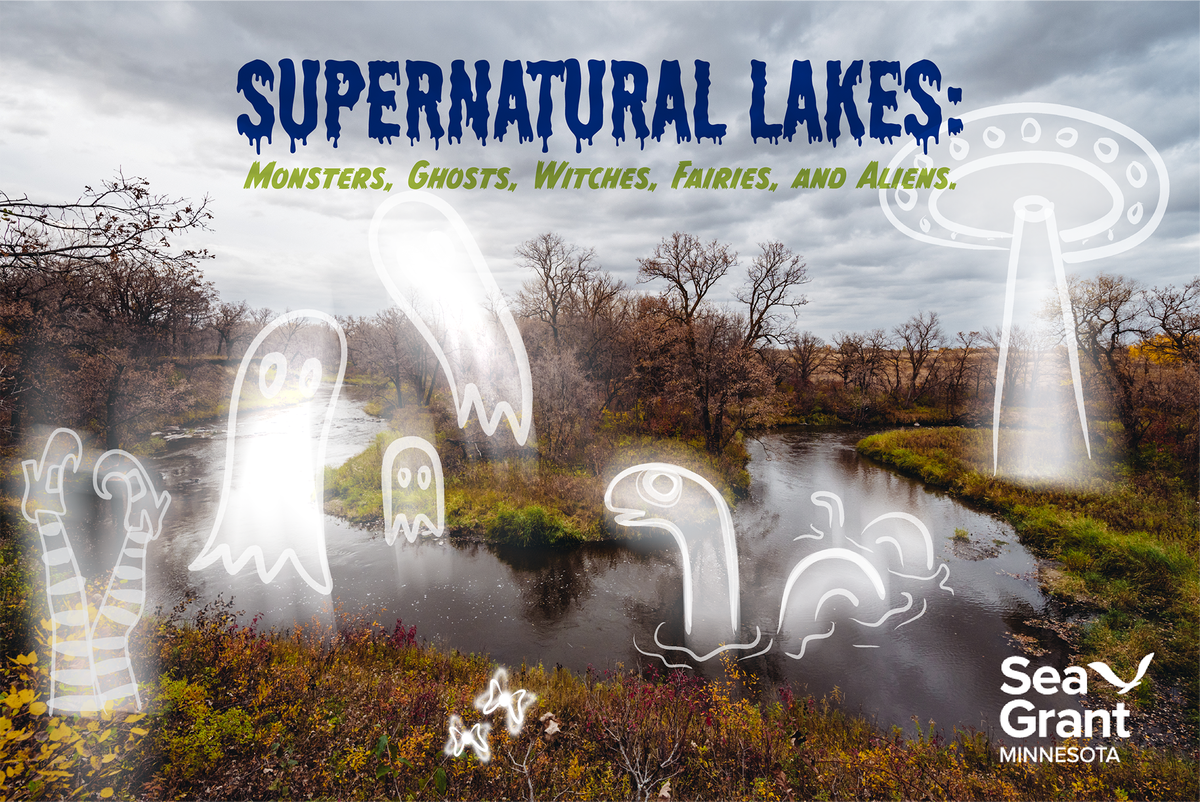Duluth, Minn.— For centuries people have looked at lakes and ponds as places of mystery, wonder, and the unknown. Who better to share tales of supernatural lakes than a lake scientist, also called a limnologist?
“Many lakes are thought to be haunted by witches or ghosts,” said John Downing, limnologist and Minnesota Sea Grant director. “Which is not so surprising when 18% of Americans say they’ve seen a ghost."
Downing will present a Supernatural Lakes webinar October 31, 2023, that tells stories of lake monsters, lake ghosts, lake witches, wicked water fairies, and aliens harbored beneath the seemingly serene waters of lakes around the world. Downing’s talk is part of Minnesota Sea Grant and Itasca Waters monthly Practical Water Wisdom: A Virtual Learning Series, which is free and open to all; registration required.
The Supernatural Lakes presentation begins with carbon cycling and the “burial” of carbon in lake sediments - wait! Stay with me on this. “Body” and “burial” … you’re likely catching the drift of where we’re going with this. You, me, animals, and plants, we’re all made of carbon. And lots of things made of carbon end up in lakes through erosion and falling out of boats. And not all decompose the way you might assume.
“A lot of organic matter gets buried in the sediments of lakes,” said Downing. “That organic matter is extremely well-preserved in lakes, even for millennia. These are the spooky bits that I call coarse particulate carbon burial.”
Downing came across one of his Supernatural Lakes victims while reading a newspaper about people in New York City camping out by the tomb of Mabel Douglass, who was the first dean, in 1918, of the New Jersey College for Women in New Brunswick, which later became part of Rutgers. In 1933, Douglass went rowing on Lake Placid (site of the 1980 winter Olympics) in search of pine boughs and never returned. In 1963, SCUBA divers found her remarkably preserved remains on a shelf about 95 feet below the water’s surface. Downing was hooked.
“The news accounts of the body of Mabel Douglass showed that she was, essentially, perfectly preserved,” said Downing. “The body was so well preserved and without much decomposition because of the cold water temperatures where her body was found. The body wasn’t made of skin, but made of soap. If you have cold conditions and a lake with basic pH, something above 7 (remember that pH is a measure of alkalinity or acidity), then bodies saponify, which means fats and oils turn into soap.”
Downing’s presentation also includes the story of the Tollund Man who died 405-384 BC yet when found in 1950 was thought to have been a recent death due to how well the body had been preserved in a Denmark bog.
“It’s impossible to talk about scary lakes without mentioning monsters,” Downing said. “At least 350 different lake monsters have been reported in North America and at least 3 in Minnesota.”
And these stories are from just the first half of Downing’s presentation.
“Halloween is my very favorite holiday,” Downing said. "It's a fun opportunity to think about how science explains, or maybe doesn't explain, unusual things."
Curious?
- Listen: Downing is to be a guest on KAXE October 23, 2023, to talk about Supernatural Lakes.
- Watch: Register for Downing’s October 31, 2023, noon to 1 p.m. virtual presentation Practical Water Wisdom: Supernatural Lakes: Monsters, Ghosts, Witches, Fairies, and Aliens.
ADDITIONAL INFORMATION:
Minnesota Sea Grant is a systemwide program of the University of Minnesota and one of 34 federal-university Sea Grant partnerships across the country that bring applied water science to communities. Minnesota Sea Grant’s extension educators, researchers and communicators work with community members, local decision-makers, policy leaders, and personnel from resource agencies, business and industry to protect, enhance and restore habitats, ecosystems and the services those ecosystems provide. We are what makes the University of Minnesota a Sea Grant institution.
Sign up to receive Minnesota Sea Grant's monthly newsletter.
CONTACT:
- John A. Downing, director, Minnesota Sea Grant, University of Minnesota and University of Minnesota Duluth.
- Marie Thoms, communications manager, Minnesota Sea Grant, University of Minnesota and University of Minnesota Duluth.
